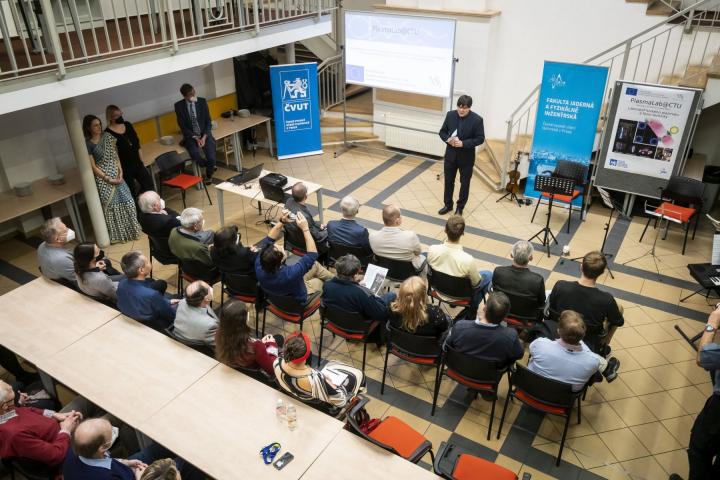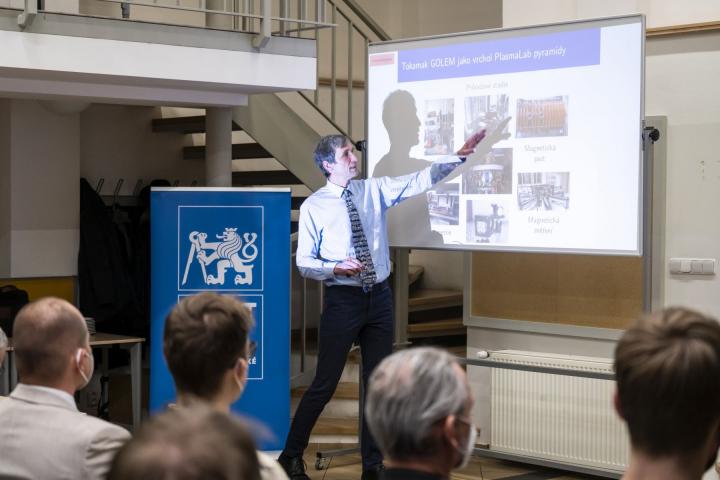
When FJFI took over the GOLEM tokamak from the Institute of Plasma Physics of the CAS 15 years ago, few had any idea how far this scientific activity would develop. In addition to its own commissioning of the fusion device and its opening to students, an international center for thermonuclear fusion research was built here, where Bernard Bigot, director of the international ITER project, visited among others. Thanks to a unique system for remote control using a mobile phone, the shot on the tokamak was also tested by Prince Albert II of Monaco. This control system is now being considered by the designers on ITER for its further control.
However, the capacities of the GOLEM tokamak are no longer sufficient for the education requirements of students from the Czech Republic and abroad. That is why the group working at the FJFI around doc. Jan Mlynář created a project PlasmaLab some time ago, which complements the experimental equipment used for thermonuclear fusion research. Thanks to the support of CZK 23 million from European investment and structural funds, the Laboratory of Hot Plasma and Fusion Technology, abbreviated as PlasmaLab@CTU, was created.
A system of vacuum chambers, the possibility of working with five different gases, a linear magnetic trap, a resonance cavity or microwave interferometry and a number of cutting-edge instruments for optical measurements await students. “PlasmaLab@CTU will offer students the opportunity to gain experience in the field of plasma measurement and diagnostics, one of the key disciplines in the development of a thermonuclear power plant,” explains Dr. Jana Brotánková from KF and continues: “To keep a burning fuel in a reactor, we need to know how it behaves. An ordinary thermometer cannot be inserted into an environment with a temperature of several hundred million degrees Celsius, this already requires sophisticated measurement methods. Students will work with electrostatic probes and magnetic sensors, for example.” Electrostatic probes measure discharge plasma in a vacuum recipient. The apparatus also serves as a “test bed”, or cradle for possible innovative designs designed by the students themselves. There is also a task for them to hone their skills in working with magnetic sensors; it is an important step for working with feedback for plasma stabilisation, one of the most basic requirements for the thermonuclear power plant itself, but also one of the most difficult to reach.
The highlight of PlasmaLab@CTU is the 3D microscope, the highest class of optical microscopy, which reaches the very limit of visible light. The microscope is here especially for material research of one of the most serious topics of fusion: monitoring the consequences of plasma interaction with the surface of the vessel. This device addresses one of the main requirements for the functionality of a thermonuclear power plant, namely maintaining the longest life of the reactor vessel.
“PlasmaLab@CTU will be used primarily by FJFI students in the new PhD program Physics of High Temperature Plasma and Thermonuclear Fusion, which we established together with the Belgian University of Ghent, but it is also open to our undergraduate students, including students of the joint European Master's program FUSION-EP, or for interdisciplinary research in the field of optics or materials engineering, for example. In addition, we will be happy if students of other universities in the Czech Republic or abroad continue to be interested in PlasmaLab@CTU, which includes the GOLEM tokamak led by Dr. Vojtěch Svoboda. I believe that everyone will appreciate this investment similarly as they appreciate the GOLEM tokamak,” adds doc. Jan Mlynář.
Photos from the event are available here.



